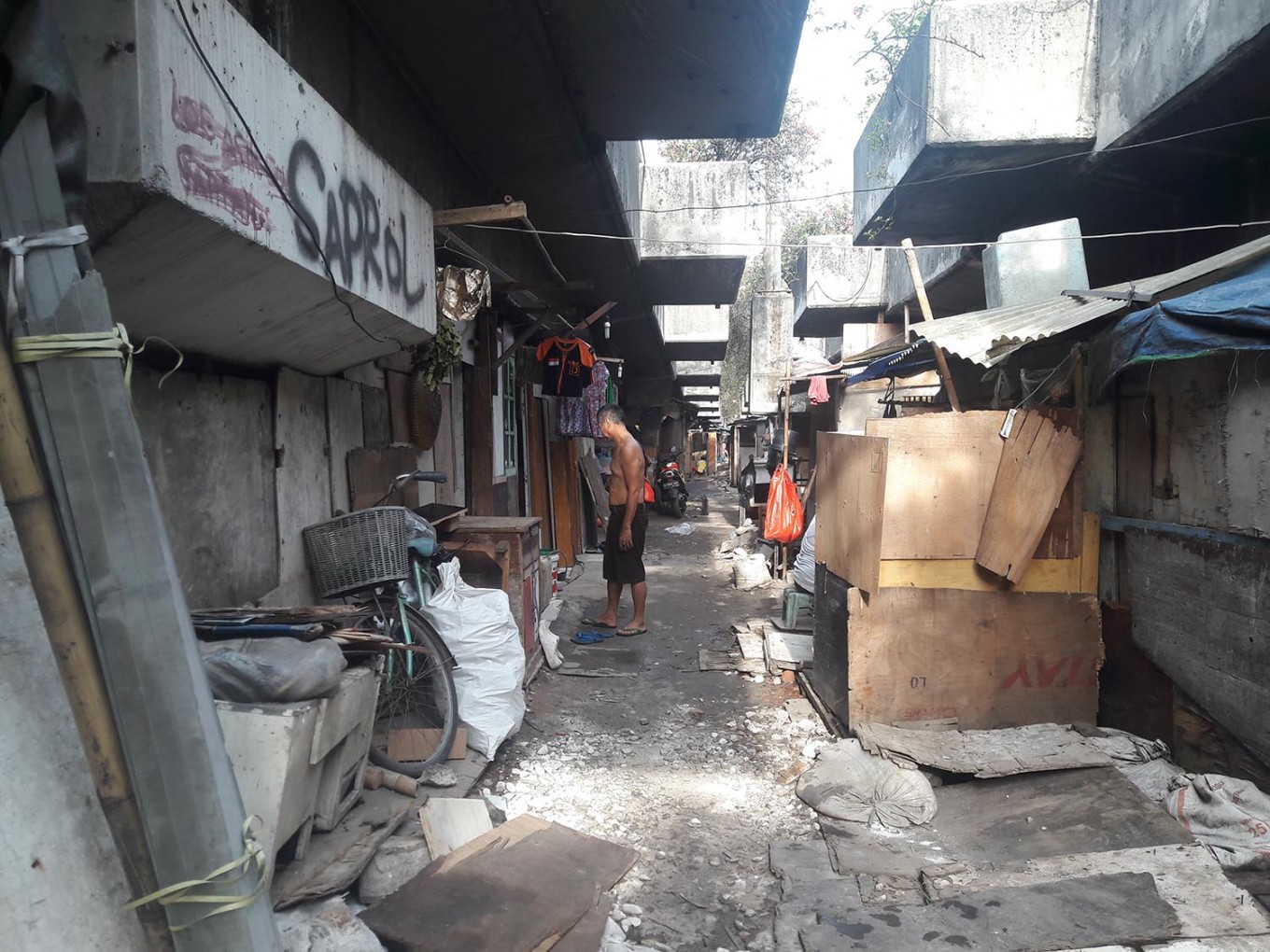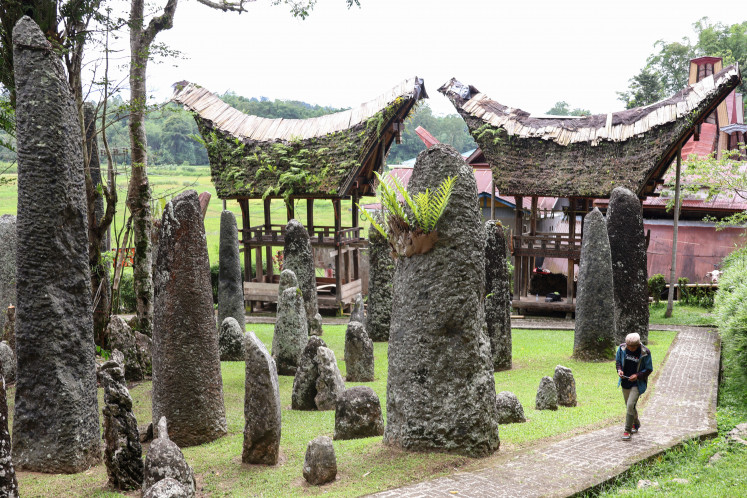Popular Reads
Top Results
Can't find what you're looking for?
View all search resultsPopular Reads
Top Results
Can't find what you're looking for?
View all search resultsToward zero poverty and sustainable development with innovation
Poverty reduction tops the 2030 Agenda for Sustainable Development and remains a priority for most countries. Innovation that brings changes to how we live and work can be a new engine for sustainable development and poverty reduction, a tool we must command.
Change text size
Gift Premium Articles
to Anyone
T
he symposium titled “Innovation in Achieving the SDGs and Eradicating Poverty” is now underway in Hanoi. Jointly organized by the ASEAN Secretariat, the United Nations Development Program (UNDP) and the Chinese Mission to ASEAN on Sept. 4 and 5, it highlights a shift to innovation and poverty reduction in response to the most urgent needs of the region in the midst of the fourth industrial revolution.
Poverty reduction tops the 2030 Agenda for Sustainable Development and remains a priority for most countries. Innovation that brings changes to how we live and work can be a new engine for sustainable development and poverty reduction, a tool we must command.
Over the last seven decades, the last four since reform and opening-up in particular, China has scored remarkable achievements in sustainable development, especially poverty reduction. There are two stories of my personal experience that I am happy to share.
My hometown is a 1,000-year-old village in coastal southeast China. During my childhood, poverty prevailed. Many fellow villagers often went to bed hungry.
But over the past four decades, tremendous changes have taken place. Now urbanized, my village is intricately connected by expressways and high-speed railways to other parts of the country. People own cars and live in two or three story houses with nice neighborhoods surrounded by eco-parks.
People are much better off now. Many are doing business at home and abroad, such as in Southeast Asia. It is the opening up policy that injected vitality into my hometown.
My job has brought me to a lot of places in China. The case I am most impressed by is Guizhou province in less developed Southwestern China. Its deep-rooted poverty and unfavorable natural conditions were once a handicap holding it back.
But a few months ago, when my wife and I had a one-week road trip there, our journey was uninterrupted all the way from the west to the east, thanks to the perfectly networked expressway system.
For years, Guizhou has been developing the digital economy and big data industry, and its double-digit gross domestic product growth rate has ranked it among the top nationwide for eight years in a row. For Guizhou, enhanced connectivity is pivotal in the fight against poverty and a way in which China is helping many other countries around the world to get out of poverty.
These stories are testaments to China’s achievements in poverty reduction. Since the start of reform and opening up, 740 million people have been lifted out of poverty, which is more than 70 percent of the global total. In just five years, from 2012 to 2017, 70 million were taken out of poverty.
Targeted poverty alleviation was made one of the three critical battles to win over in its pursuit toward zero poverty among the rural population by 2020.
The Chinese approach is a proven case in delivering the Sustainable Development Goals (SDGs). China was the first developing country to realize the poverty reduction target, a priority among the SDGs, with the Millennium Development Goals (MDGs) basically achieved in 2015.
Chinese President Xi Jinping laid out the vision of building a community with a shared future for mankind with a series of principles, including harmony between man and nature, the value of clean waters and lush mountains as well as the importance to address such issues as imbalances in development, difficulties of governance, the digital divide and income disparity.
Guided by the principle of participation, collaboration and common interest, China has followed a path of targeted poverty reduction, which focuses on each different case while sustaining growth of the local economy and empowering locals with the means to prosper.
China has been an active contributor in global cooperation against poverty. In the past 70 years, China provided financial aid of over 400 billion yuan (US$55.7 billion) to nearly 170 countries and international organizations and carried out over 5,000 assistance projects overseas, having dispatched more than 600,000 personnel, trained over 12 million from other developing countries and assisted over 120 developing countries to realize the MDGs.
Poverty eradication remains a daunting challenge for our region and beyond, especially for China and ASEAN countries who are at a critical moment of development. It must be noted that our concerted efforts have yielded rich fruits in recent years, as evidenced by mechanisms such as the ASEAN-China Forum on Social Development and Poverty Reduction and the projects of poverty reduction cooperation in East Asia.
We have enhanced policy dialogue to fully tap the potential of poverty-stricken areas, developed new ways of cooperation, and upgraded industrial models, thus reinforcing each other’s poverty relief endeavors.
According to the ASEAN-China Strategic Partnership Vision 2030, ASEAN and China will work together to implement objectives under the UN 2030 Agenda for Sustainable Development, including poverty eradication in all forms and dimensions, in accordance with respective sustainable development goals.
This vision navigates our efforts toward building more consensus and expanding cooperation. First, we need to foster greater synergy between the Belt and Road Initiative and ASEAN development plans. Second, we need to step up exchanges in innovation, in particular new theories, policies and actions, to propel sustainable development and poverty reduction.
Third, the ASEAN Secretariat, UNDP and China need to complement each other by leveraging respective strengths in research, practice, regional cooperation and the networking of people, so that the three of us working together is more than the sum of each working separately. Fourth, we need to look for new models of practical cooperation. The Chinese Mission, the Asian Solidarity Economy Council (ASEC) and UNDP have agreed to implement projects on sustainable development in countries along the Mekong River.
ASEAN-China relations have entered a new stage of all-round development. The in-depth and insightful discussions at the symposium bring us closer toward zero poverty, sustained growth and shared prosperity for all.
***
Chinese ambassador to ASEAN.











